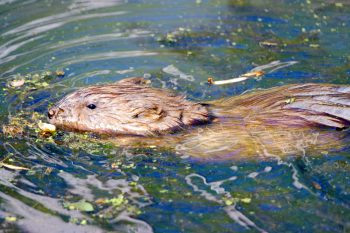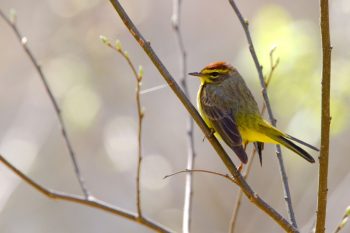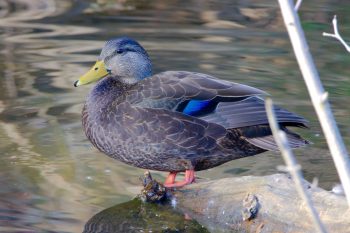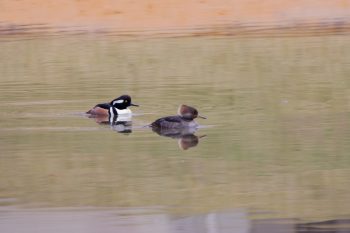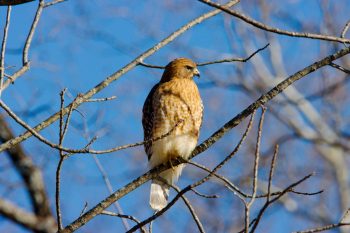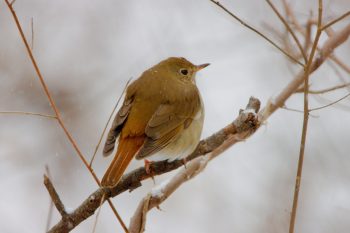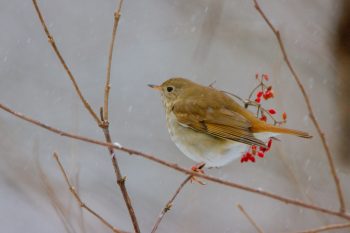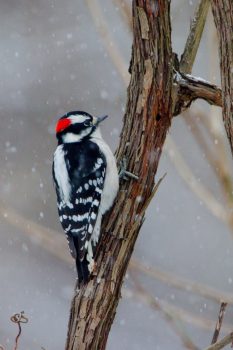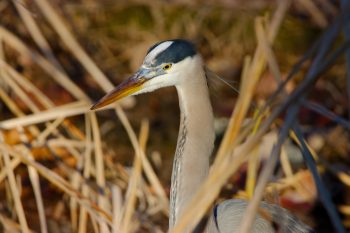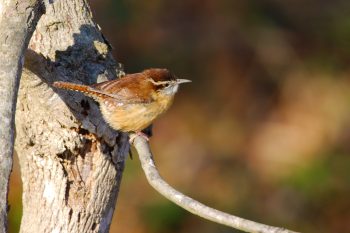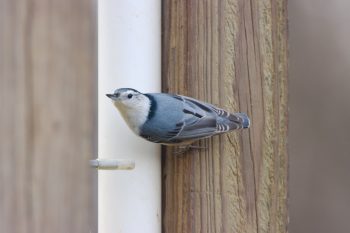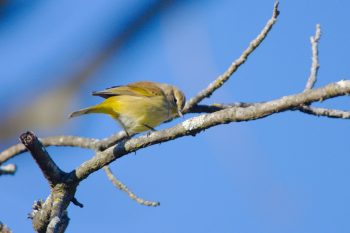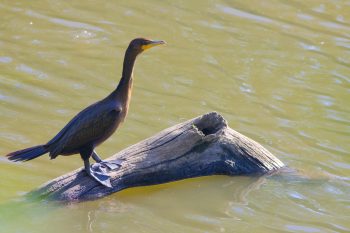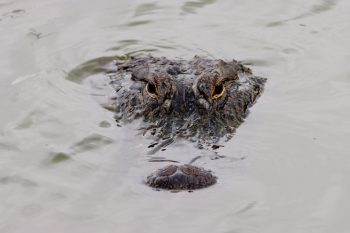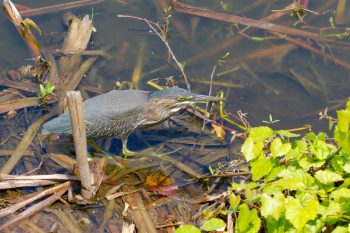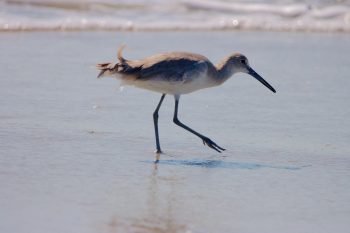As mentioned in my previous post, we walked on the C&O Canal today. We saw this great blue heron (Ardea herodias) near the beginning of the walk and then again as we were returning. It was a good day for wildlife in general and we also saw (and I photographed) a hermit thrush (Catharus guttatus), a pileated woodpecker (Dryocopus pileatus), a few mallards (Anas platyrhynchos), a small group of double-crested cormorants (Nannopterum auritum), a pied-billed grebe (Podilymbus podiceps), and a blue jay (Cyanocitta cristata). All in all, an enjoyable outing.
Creatures
Great Blue Heron (Ardea herodias)
Muskrat (Ondatra zibethicus)
We walked on the canal this afternoon, starting at Old Angler’s Inn and heading downstream as far was where the towpath is closed for renovation (a little ways past the Marsden Footbridge). We saw at least three and possibly four muskrats (Ondatra zibethicus) in the canal, which is more than we’ve ever seen on a single outing (and we normally see zero). A few of them were fairly close to our side of the canal and with my long lens I was able to get even closer. There were a lot of turtles out, enjoying the warmth from the sun. We saw wild geraniums, star chickweed (Stellaria pubera), and American cancer-root (Conopholis americana) as well.
Palm Warbler (Setophaga palmarum)
We went to the Agricultural History Farm Park today and walked around quite a bit. I got a few nice photos of eastern bluebirds (Sialia sialis) as well as some barn swallows (Hirundo rustica) but I was especially pleased with the shots I got of this palm warbler (Setophaga palmarum). It was a lovely day and we saw this species twice in different part of the property. It could have been the same bird, of course, but less likely. We are at the northern edge of their winter grounds and they breed far to the north, so now and in the fall are the best times to see them in our area.
American Black Duck (Anas rubripes)
We went to the C&O Canal today, walking from the Cabin John Aqueduct Bridge on MacArthur Boulevard down to the canal and then upstream to a point about half way between locks 8 and 9. We enjoyed being out but this is never going to be among our favorite walks, due to the traffic noise. Still, it’s good to be out. We saw a few American black ducks (Anas rubripes) on the canal, along with mallards (Anas platyrhynchos) and a few turtles, but not much else. There were bluebells coming up, which is always a treat.
Cooper’s Hawk (Accipiter cooperii)
We went for a walk part of the way around Lake Needwood today. It was fairly cool out but a pretty day otherwise. There were assorted ducks out on the lake but mostly they were pretty far away. This hawk, however, was in a tree below the path so with the aid of the hill, I was just about on a level with him. I think it’s probably a Cooper’s hawk (Accipiter cooperii) but it’s really hard to say for sure. Distinguishing between Cooper’s and sharp-shinned hawks (Accipiter striatus) is very difficult and I tend to favor sharpies in identifications because I think they’re a bit more common. But that may be a self-fulfilling prophecy. In any case, it’s one of those two and it’s a lovely bird.
Hooded Mergansers (Lophodytes cucullatus)
We took a walk to Sandy Spring today after visiting Cathy’s mom. There wasn’t a lot to photograph but we did see this pair of hooded mergansers (Lophodytes cucullatus) on a pond near Sandy Spring Friends School on a path off from the main trail. They’re pretty birds and fairly easily recognized. We’ve seen quite a few of them this winter, possible more than in past years, but that may be because we’re paying more attention, especially now that I have my long telephoto lens and can get much better photos of them.
Hawk and Vulture
As mentioned in the previous post, also from today, we stopped at the Izaak Walton League’s Lake Halcyon where I photographed three different duck species. From there we continued to the C&O Canal, parking at Violet’s Lock and walking down river past Blockhouse Point. We were treated right away to the first bird shown here, a juvenile sharp-shinned hawk (Accipiter striatus). He was fairly easy to spot because there were folks with binoculars looking up into the tree where he was perched.
It was a lovely day to be out, very bright and comfortably cool. Around Blockhouse Point we saw a pair of black vulturex (Coragyps atratus) enjoying the warmth from the sun. They were across the canal from us and seemed to be unconcerned with our presence. This photograph, in particular, I like. As we were walking back towards Violet’s lock, a couple with binoculars pointed out a bald eagle on a tree on an island in the river. It was pretty far away, but easily identifiable. We saw quite a few smaller birds, as well, but I didn’t get any photos of them. We saw a few turtles, too. When we got back to the parking area, what we assume was the same sharpie was in a different tree but in the same area.
Eastern Bluebird (Sialia sialis)
As the weather was so fine, we went for another walk today, this time at the Montgomery County Agricultural History Farm Park. The winter aconite (Eranthis hyemalis) was blooming in the shade garden and we walked through the Master Gardener’s demonstration garden, though there isn’t so much to see this time of year. There is one witchhazel that was blooming and oddly had all it’s dried leaves from last year still on it.
Then we walked around a large field and saw quite a few birds. We rarely go there without seeing at least a few eastern bluebirds (Sialia sialis) like the one shown here. We also saw what we think was a Ruby-crowned Kinglet (Corthylio calendula) although the photographs are inconclusive. We saw a few woodpeckers and a hawk fly by.
Hermit Thrush (Catharus guttatus)
As mentioned in the previous post, we had a nice snowfall today, last most of the day and slowly accumulating to about four inches. We walked around part of Lake Frank early this afternoon, heading down Trailways from the neighborhood. We saw the downy woodpecker (Dryobates pubescens) in the previous post in the woods at the bottom of Trailways.
From there we walked towards the dam, stopping to take a few pictures on the way. There were lots of sparrows and we saw dark-eyed juncos (Junco hyemalis), white-breasted nuthatches (Sitta carolinensis), American robins (Turdus migratorius), northern cardinals (Cardinalis cardinalis) and a few eastern bluebirds (Sialia sialis).
I was really pleased to see and photograph two hermit thrushes (Catharus guttatus). This is the second of those and it posed really nicely for me. It was eating the red berries in the second photo but unfortunately I wasn’t able to catch that properly. Still, I think these are pretty nice pictures and I’m happy with them.
By the time we got home my hat had a good layer of snow on the brim and my beard had some ice in it. Still, I was glad to get out and enjoy the birds.
Downy Woodpecker (Dryobates pubescens)
We woke up to about three-quarters of an inch of snow this morning and it kept coming down lightly all day. It never really snowed very hard and there was very little wind, so it was actually quite pretty and nice to be out in it. In the early afternoon we went for a walk, heading down from the neighborhood to Lake Frank. We saw (and I photographed) a pileated woodpecker (Dryocopus pileatus) on the way there and once in the park saw quite a few other small birds, including quite a few downy woodpeckers (Dryobates pubescens). This one moved from a tree to a grape vine and then let me get fairly close. I’m pretty pleased with these two photos, almost certainly the best I’ve taken of this bird species.
I could get pictures of these and many other birds in our yard fairly easily. Downy woodpeckers will almost certainly come if I were to put out suet for them. Nevertheless, there’s something special about getting them totally in the wild. It’s especially nice to get them on a snowy day, which allows a much lighter background than would otherwise be the case in the woods most of the time. The downy woodpecker and its second-cousin the hairy woodpecker (Leuconotopicus villosus) look much alike and at a glance it’s not always easy to tell them apart. The hairy is about 50% larger than the downy, which is especially useful if you see both of them at once. The other noticeable difference is the length of their bill. On the downy is is very short and stubby while on the hairy it is much longer relative to the size of the head.
Both are present but my experience is that the downy is considerably more common, at least in our area. They both can often be heard—drumming on a tree—long before they are seen.
Great Blue Heron (Ardea herodias)
We went to the C&O Canal today at Great Falls. It was in the mid-30s but we dressed appropriately and had a really nice walk. The river was relatively high and I got some nice pictures of the raging torrent. We didn’t see many small birds but saw three great blue herons (Ardea herodias), lots of mallards (Ardea herodias), and one sharp-shinned hawk (Accipiter striatus). Between the wind and the noise of the water we couldn’t really hear birds, even if they were there. Two of the herons we saw (which may have been the same bird two hours apart) were on the side of the river. This one, however, was in the canal, behind some cattails.
White-throated Sparrow (Zonotrichia albicollis)
We went to Meadowside Nature Center today and walked down to Lake Frank. We could see the eagle’s nest but didn’t see any eagles. It isn’t clear if the nest is in use. It seems to have deteriorated a bit, but it’s hard to know.
We returned by way of the Pioneer Homestead. On the small pond between that and the nature center we saw two pairs of hooded mergansers (Lophodytes cucullatus). As we walked up from the pond I stopped to take a few photos of this white-throated sparrow (Zonotrichia albicollis). They are quite common here, especially in winter, moving north in the summer. They have a distinctive whistle, often described as “Poor Sam Peabody, Peabody, Peabody.”
Carolina Wren (Thryothorus ludovicianus)
We went to the C&O canal today, starting at Riley’s lock, where Seneca Creek flows under the canal snd into the Patomac River. We walked about 11⁄3 mile upstream. We saw a great blue heron (Ardea herodias) below the towpath beside a stream, some turtles across the turning basin, and I even got a few pictures of a golden-crowned kinglet (Regulus satrapa). Those last were a bit blurred, though, so I decided to post this photo, which is one of five I got of a Carolina wren (Thryothorus ludovicianus) in the trees growing in the old canal bed. It’s a cute little bird don’t you think?
White-breasted Nuthatch (Sitta carolinensis)
Cathy, Dorothy and I went for a nice walk along Croyden Creek this afternoon. We started by walking east (downstream) on the north side of the creek. Shortly before Croyden Creek runs into the Northwest Branch Rock Creek, the trail goes up onto a wooded hill and then circles around to the left, eventually running into the roadbed of the old, abandoned Avery Road. We continued west from there, crossing the creek on a bridge and then returning to the Croydon Creek Nature Center across the bottom of the field beloe the Glenview Mansion. Back at the nature center I photographed birds at the feeders and got a few nice shots, including this one of a white-breasted nuthatch (Sitta carolinensis).
Palm Warbler (Setophaga palmarum)
After our Sunday visit with Cathy’s mom we went to the Sandy Spring Friends Meeting House and parked. We thought we’d take a walk south from there into the fields around the Sandy Spring. We ran into someone who asked if we wanted a tour of the meeting house, so we did that. My great great grandparents met there sometime before November 20, 1852 (since that’s when they got married).
After that we walked to the Maryland state champion white ash tree (Fraxinus americana) and then on to the spring. On the way back I got a few pictures of bluebirds (Sialia sialis) and a house finch (Haemorhous mexicanus) and this shot of what I believe is a palm warbler (Setophaga palmarum).
Nannopterum auritum (Double-crested Cormorant)
Cathy and I drove to Meadowside Nature Center today and walked from there to Lake Frank. Crossing the meadow alongside North Branch Rock Creek, the weeds were quite tall and the path less obvious than usual. We also saw poison ivy a few times and since Cathy was wearing shorts, I carried her twice on my back. We had a hard time finding the trail that leads from there up over the ridge but eventually made our way to it. Down on the other side was saw this juvenile double-crested cormorant (Nannopterum auritum) on a log in the lake. I was able to get fairly close it order to get a good photo, although the lighting was a little rough.
American Alligator (Alligator mississippiensis)
We made one last visit to ‘Alligator Pond’ today and got a nice, very close-up view of an American alligator (Alligator mississippiensis). We also enjoyed seeing a great blue heron (Ardea herodias) and across the water a flock of wood storks (Mycteria americana). It was quite hot today, probably the hottest day of the week and with rain in the morning, it was very humid. It’s our last day at the beach and we have a longish drive home ahead of us tomorrow. So, nice to take it easy today.
Green Heron (Butorides virescens)
After our walk in the Green Swamp we drove to the Twin Ponds overlook. We affectionately call it Alligator Pond because that’s what we generally go to see. The boardwalk style viewing platform is officially call the Carl Bazemore Bird Walk. There are also birds there, and today we saw this green heron (Butorides virescens) in the shallows. In years past the view has been obscured by rank growth between the viewing platform and the pond. Sometime since last year that has been cut down, making the viewing considerably better. We did see an alligator there today, but I think my best photo from the visit was this one of the heron.
Willet (Tringa semipalmata)
We walked on the beach at the east end of the island this morning. It was a clear day with very bright sun so I wore a hat and shirt and put sunscreen on exposed skin. We looked for shells but didn’t find many. Past years have been good for shell-hunting but there don’t seem to be as many this year. That means that the beach is almost pure sand, which in general isn’t a bad thing. But it’s one less thing for us to do. We saw a few sandpipers as we walked including this willet (Tringa semipalmata). They are very distinctive birds and quite common on the beaches of North Carolina.
Painted Bunting (Passerina ciris)
Cathy and I drove to Sunset Beach today and walked from the west end of town out onto the beach and then further west to the Bird Island Reserve nature trail. It’s a pretty good walk but not a difficult one. We had heard that there was a good chance of seeing painted buntings (Passerina ciris). As it turned out, we only saw one and he was a rather scruffy looking fellow, possibly a juvenile, just getting his adult plumage. He was singing nicely for us, though, and I was able to get a short video, as well as a handful of photos. He’s in the shadows of the twigs to the right, which makes his color pattern seem a little odd, but that’s him, anyway. There were quite a few swallows flying around, as well as cardinals and mourning doves, but we only saw the one bunting. Nevertheless, worth it and we’ll probably plan to go again next year.


